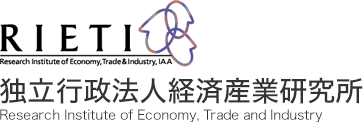| 執筆者 | 森川 正之(特別上席研究員(特任)) |
|---|---|
| 発行日/NO. | 2025年11月 25-E-107 |
| ダウンロード/関連リンク |
概要
本稿は、コロナ危機時に採られた企業支援策の中でも利用企業の多かった資金繰り支援、雇用調整助成金、持続化給付金の3つの政策を利用した企業の2023年度までの経営成果に関する観察事実を提示する。分析結果によれば、第一に、各種支援策を利用した企業の新型コロナ終息後の生産性は、コロナ危機直後に比べれば改善したものの総じて低水準にとどまっている。第二に、資金繰り支援策および持続化給付金を利用した企業の利益率及び平均賃金は新型コロナ前の水準と違いがなくなっているが、雇用調整助成金を利用した企業は2023年度時点でも低水準にある。第三に、支援策を利用した企業の2023年度までの雇用変化を見ると非利用企業よりも減少している。第四に、支援策を利用した企業は2023年度に存続している確率が低く、政策的支援の効果に限界があったことが示唆される。ただし、生産性の低い企業が退出するという市場での選別メカニズムを阻害する副作用を持ったとまでは言えない。
(本稿は、日本語版のディスカッション・ペーパー(25-J-021)に修正を加えた上で、英語版にしたものである)
概要(英語)
This study presents evidence on the performance of firms up to FY2023 that used three major support policies during the COVID-19 crisis: financial assistance, the employment assistance subsidy, and the subsidy to sustain business. The results show, first, that although productivity among firms that received support improved compared to levels immediately following the crisis, it generally remained low even after the pandemic subsided, with the quantitative magnitude differing across policy measures. Second, profit margins and mean wages of firms that received financial assistance or the subsidy to sustain business returned to their pre-COVID-19 levels, while wages of firms that used the employment assistance subsidy remained low as of FY2023. Third, by FY2023, employment levels declined among firms that used the support measures, compared to those that did not. Fourth, the probability of survival in FY2023 was lower for firms that used the support measures, suggesting that the effectiveness of these policies was limited. However, the support measures did not appear to hinder the market’s selection mechanism, whereby less productive firms exit from the market.

